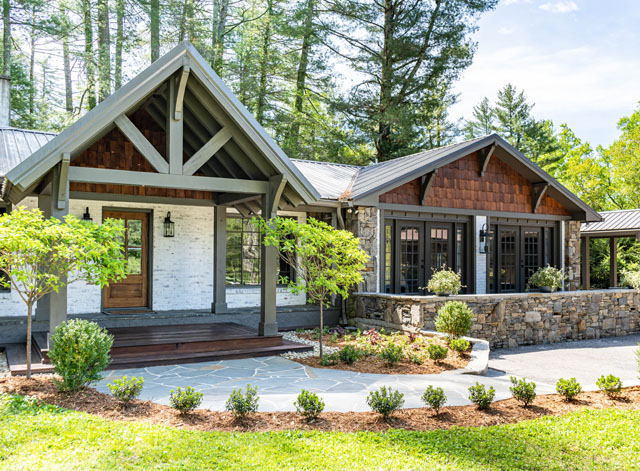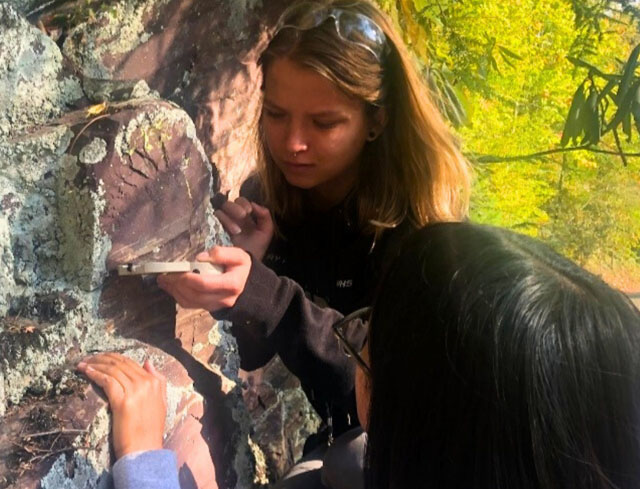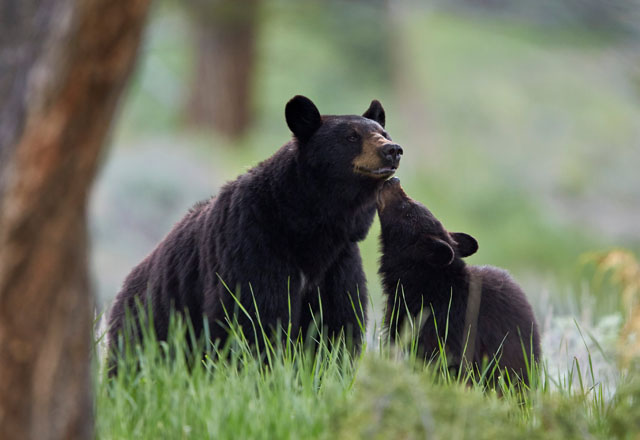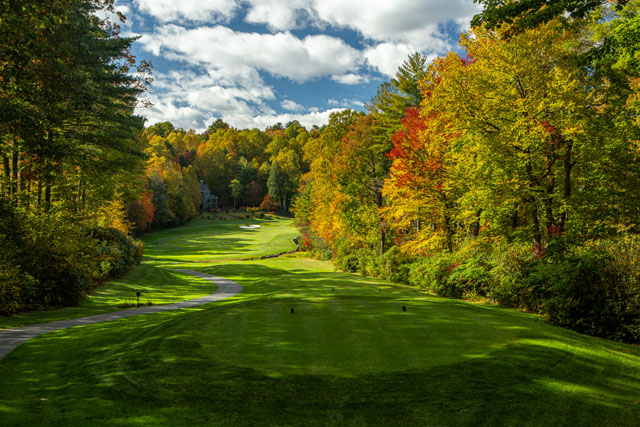The Plateau’s Wild Places
01 Jun 2023
The Highlands-Cashiers Land Trust protects what we hold dear
Everybody needs beauty as well as bread,
places to play in and pray in, where nature may heal
and give strength to the body and soul.
John Muir
By LISA GRAY YOUNGBLOOD
Photos by ANDREW RENFRO
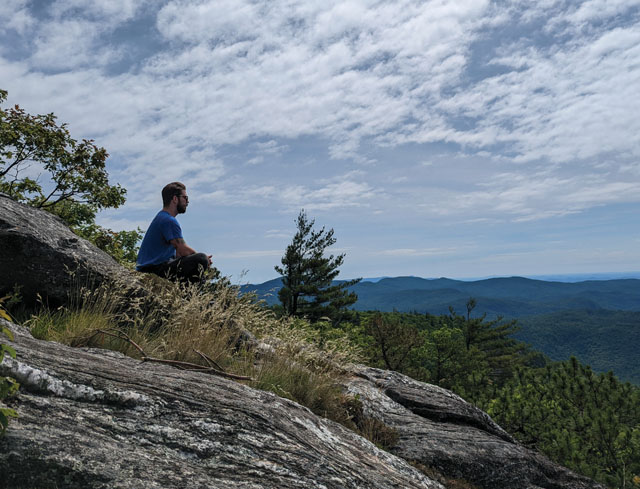
The Highlands-Cashiers Land Trust (HCLT) is the oldest land trust in North Carolina and among the first 20 in the United States. Its mission is to preserve and protect valuable natural resources for all generations. It began in 1883 as the Highlands Improvement Association (HIA) and, through various acquisitions and conservation easements, increased its reach and impact to cover the entire plateau. As a nationally accredited 501(c)(3) nonprofit land conservation organization, HCLT has been strategically conserving our most ecologically vital lands for well over a hundred years.
For the last 17 years, HCLT has been under the stalwart leadership of Dr. Gary Wein, a beloved figure on the plateau who has been integral to HCLT’s growth and success. From 2015 to 2021 alone, HCLT increased land protection by 38% but only increased its budget and operating expenses by 15%, which is wonderful but not sustainable. Thanks in large part to Dr. Wein, HCLT now protects over 3800 acres on the plateau with aspirations to protect much more.
On June 30, however, Dr. Wein will step down, and HCLT will have a new Executive Director, Lance Hardin. An avid hiker and history enthusiast, Hardin has plans of his own. With a wealth of nonprofit experience, Hardin intends to focus on HCLT’s strategic conservation of the plateau’s iconic properties. “Our beloved natural resources face unprecedented challenges due to changing demographic, climate and economic forces,” he explains. “There has never been a more important time for HCLT’s mission.”
At this passing of the torch, we wanted to reflect upon what HCLT means to the plateau. How exactly has it impacted our lives? To answer this question, we highlight some of the most ecologically significant properties currently under its stewardship. Understanding the value of these sites can help us look into the future and renew our commitment to support the organization that supports us.
Keep in mind that HCLT is not a regulatory agency. It cannot bring enforcement actions against noncompliant actors. Rather, it acts as a perpetual steward of the land, which means it must acquire rights to that land first. HCLT does this in three ways: creation of conservation easements, donation or occasional purchase of lands in fee simple, and bequests. All of these require funding, a dedicated staff and committed volunteers. This is where we come in. As ordinary citizens and property owners, there is much we can do to support HCLT.
McKinney Meadow
In the heart of downtown Cashiers, this stretch of land holds not only history but a biodiversity that has made it a designated stop on the Butterfly Highway, a statewide conservation restoration initiative that aims to restore native pollinator habitats to areas impacted by urbanization, land use change and agriculture.
This site stands at the entrance to the historic 107 corridor in Cashiers, home to three National Register of Historic Places properties: High Hampton, Church of the Good Shepherd and the Zachary-Tolbert House. It was for sale and likely would have been purchased for commercial development, but the community rallied around preservation efforts and raised money for its purchase.
Historically, this property was the site of the McKinney Boarding House, where early 19th century prominent figures like John C. Calhoun stayed when visiting the area. It is rumored that on one of Senator Calhoun’s visits, a travelling postman stopped in for the night only to find there were no beds. Not to be deterred, the postman turned to the Senator and said, “Move over thare old Horse, and let’s spoon.”
Community icon Granny Allen, known for her generosity toward workmen, also lived on the property until her home was demolished in the early 1970s.
But perhaps its greatest magic is in what it offers today. HCLT manages the property as a wildflower meadow, for which the site is particularly well-suited. Natural groundwater discharge has created a wetland that teems with life, and the land’s topographic characteristics, including impacts from its previous uses and plantings, have resulted in diverse vegetation. This network of native flowering plants, critical to HCLT’s restoration efforts, supports butterflies, bees, birds and other pollen and nectar dependent wildlife, which in turn support us.
Our local native pollinators, including 174 species of butterflies, 13 species of bumblebees and the Ruby-throated hummingbird, are responsible for pollinating important fruit and vegetable crops that are a vital link in the comprehensive food web. Unfortunately, these pollinators are threatened due to habitat loss, invasive plants and pesticides, which makes properties like McKinney Meadow invaluable. By protecting these pollinators and preserving their habitat, we are protecting our future.
Edward Baker Preserve
The Edward Baker Preserve is a 64-acre site on Laurel Knob Road with an intact second-growth forest and rudimentary trails. A second-growth forest is a forest or woodland area that has regenerated through largely natural processes after human-caused disturbances such as timber harvest or agricultural clearing or equivalently disruptive natural phenomena. These forests provide habitat for native species, preserve watersheds and restore connectivity between ecosystems.
This site will be HCLT’s first public hiking trail in Cashiers and is a potential site for a pocket meadow, a sustainable approach to gardening for wildlife. Pocket meadows are small, native plantings inspired by the natural landscape that offer the same ecological benefits of wild meadows but on a smaller, more manageable scale. This type of gardening supports insects and recreates an ecological web as it rebuilds a sustainable habitat. In addition, headwater seeps on the property provide wetland habitat, which is abundant in animal and plant life.
The property will also serve as a buffer to developed spaces, critical at this time of proposed development in Cashiers, and preserve green space, which positively impacts all communities. This site could well become our own mini-Central Park, preserving what we so love about living here.
Satulah Mountain
As the first purchase of HIA, which would eventually become HCLT, one could argue that it all started here. This land had been slated to become a hilltop hotel, but HIA knew it could serve a better, long-term purpose, and it raised $500 to purchase the 56 acres outright. This purchase protected the right of people “to behold the beauties of the sunset, starlit heavens, and the glories of the sunrise.”
At 4543 feet, Satulah Mountain is one of the tallest peaks of the Blue Ridge Escarpment and is often referred to as an “island in the sky.” It is also home to a number of rare and unusual plant species including granite dome goldenrod, Hartweg’s locust and dwarf juniper. The trees at the ridgetop forest are likely close to 300 years old even though conditions have dwarfed them to deceivingly small heights and girths. In addition, the land is dominated by ericaceous shrub species including rhododendron, azalea, huckleberry and mountain laurel.
The trail on Satulah Mountain is over 100 years old, and visitors can explore the old stone house used by the earliest hikers. In fact, there is much history here, for this is where Highlands was born. The rock at the summit, where the Forest Service Fire Tower once stood, is the very spot where Samuel Kelsey, founder of Highlands, was inspired to found the town.
As a registered North Carolina National Heritage site, the property holds historical and future cultural significance. The North Carolina National Heritage Program is a program of the Division of Land and Water Stewardship within the North Carolina Department of Natural and Cultural Resources. By gathering and sharing information about rare species and natural communities, this program ensures public access to information needed to weigh the ecological significance of natural areas and to evaluate potential ecological impacts of conservation and development projects. In other words, it helps us grow in a way that is sustainable and preserves the spirit and integrity of these mountains.
Dixon Woods
Dixon Woods is one of the flattest hikes in Highlands, allowing those who cannot or do not wish to tackle the rougher terrain to enjoy our beautiful landscape. Located at the headwaters of the Cullasaja River, the site is lush with vegetation and animal life and has an on-site pond that serves as a breeding site for salamanders, a species critical to the ecosystem.
In addition, HCLT is developing a wildlife pocket meadow that will provide pollinator habitat, vegetation for wildlife and respite for two-legged visitors. Once complete, the pocket meadow will provide a beautiful clearing next to a stream. With picnic tables and abundant wildflowers, this will no doubt become a favorite site for locals and visitors alike.
These are only four of the many sites over which HCLT acts as steward, but they are good examples of why HCLT’s work is critical here on the plateau. We need to protect our wild places. These places support the web of life by protecting flora and fauna of all make, including our precious pollinators. The connected parks and green spaces offer innumerable health benefits by promoting physical activity and connecting us with nature. And let’s not forget the birds. The National Audubon Society and Bird Life International have designated the plateau as one of the most important bird areas of the world. Birds of high conservation priority, including the Black-throated blue warbler, Canada warbler, Golden-crowned Kinglet hooded warbler, Rose-breasted Grosbeak and the Red-breasted nuthatch, thrive in these mountains.
If the mountains speak to you, speak back by supporting HCLT. Whether it is time, land or resources, we can all do our part. Think of this as a gift to your children and grandchildren—and their children and grandchildren. It is a promise to future generations that the beauty and integrity of the plateau will endure. It is a gift that will outlast us all. It is a legacy of love.


